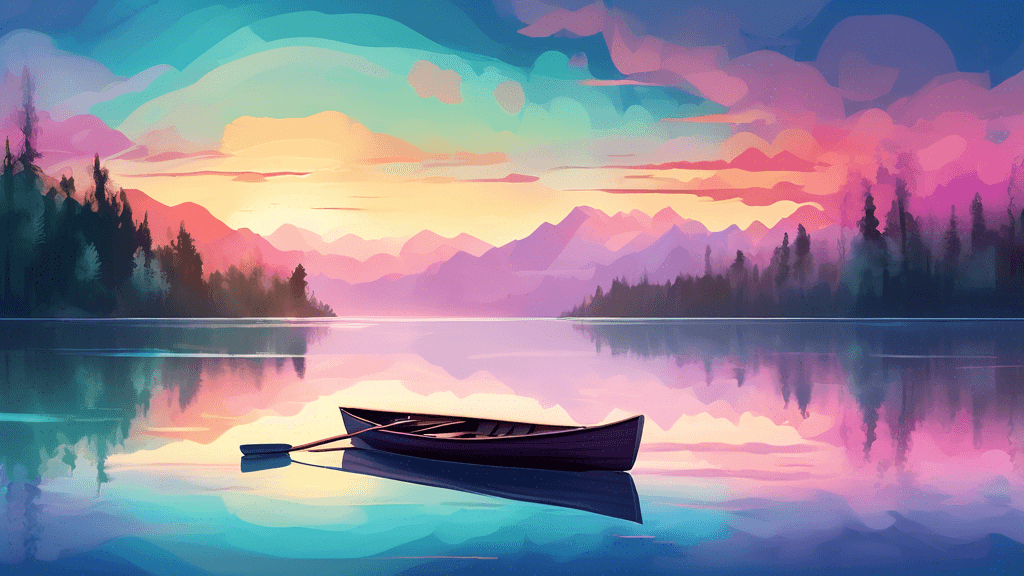
Capturing Tranquility: Dawn and Dusk Lake Photography
Share
Why Focus on Dawn and Dusk for Lake Photography?
Have you ever stood by a serene lake at dawn or dusk, captivated by the tranquil beauty? There's a reason photographers treasure these moments. The soft light at these times, known as the golden hours or magic hours, can transform a simple scene into a breathtaking vista. Dawn and dusk offer unique conditions that are not just visually stunning, but also deeply evocative.
The Magic of Golden Hours
The golden hours occur shortly after sunrise and just before sunset. During these times, the sun is low in the sky, producing a soft, diffused light which minimizes harsh shadows and highlights the delicate textures of nature. Why does this matter for lake photography? Consider these points:
- Enhanced Colors: The low sun angles create warm, golden tones that are perfect for capturing the serene and peaceful essence of lakes.
- Reflections: Calm waters can mirror these mesmerizing colors and sky, doubling the beauty in your compositions.
- Mood and Atmosphere: There’s a tranquil and almost mystical feeling evoked by early morning mists or the fading light at dusk.
Such conditions not only promote the aesthetics of a frame but also elicit emotional responses from the audience, connecting more deeply than the mere recording of a landscape.
Techniques for Capturing the Perfect Lake Photos at Dawn and Dusk
Understanding the Technical Settings
Mastering certain technical aspects can enhance the quality of your dawn and dusk photos. Here are a few key settings to consider:
- Exposure: Bracket your exposures to ensure you capture the wide range of light intensities found during these times.
- White Balance: Adjusting white balance can help manage the color temperature and affect the mood of your images.
- ISO: Keep it as low as possible to minimize noise, which is crucial in low light environments.
- Shutter Speed: Use a slower shutter speed to capture smooth water movements, creating a calming effect.
Compositional Elements
Composition in photography goes beyond just framing. It involves leading lines, rule of thirds, balancing elements, and especially, making use of natural features. Here’s how you can use these elements effectively:
- Reflections: Use the reflective qualities of water to your advantage. Symmetry can double the visual impact of your scene.
- Silhouettes: Early morning or late evening creates strong backlighting, perfect for capturing dramatic silhouettes against the vibrant sky.
- Natural Elements: Incorporating elements such as rocks, trees, or docks can add a point of interest and help guide the viewer's eye through the scene.
Advanced Techniques for Unique Shots
While traditional shots capture the inherent beauty of lakes, exploring advanced techniques can add a unique touch:
- Long Exposure: Use a neutral density filter for longer exposures during brighter parts of dawn or dusk, smoothing out water and capturing the movement of clouds.
- Time-Lapse: This can show the progression of light and color through time, offering a dynamic view of the serene landscape.
- Panoramic: Stitching together multiple shots can create a breathtaking wide-angle view that single frames cannot capture.
The Importance of Environmental Awareness
As photographers, we hold the power to encourage environmental stewardship through our art. When shooting in natural settings like lakes at dawn and dusk, here are crucial considerations:
- Respect the Environment: Stick to trails and public access areas, avoid disturbing wildlife, and carry out everything you bring in.
- Inspire Conservation: Use your images to showcase the beauty of these environments, which can inspire others to appreciate and protect these natural resources.
As stated by the renowned conservation photographer Phillip Hyde, Nature photographers are some of the first, and most ardent, proponents of conservationism. The power of an image to influence hearts and minds is unparalleled.
Conclusion
Capturing the tranquil essence of lakes during the magical times of dawn and dusk not only enriches our photographic portfolios but also our souls. By employing the right techniques, understanding the importance of these specific times of day, and advocating for the protection of our natural world, we can make a profound impact.
Are you ready to explore the serene beauty of dawn and dusk at your local or far-flung lakes? Remember, every photograph you capture and share has the power to inspire tranquility and conservation. Let's make every shot count for both art and nature.





